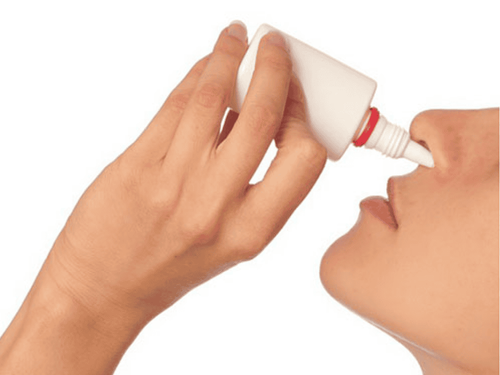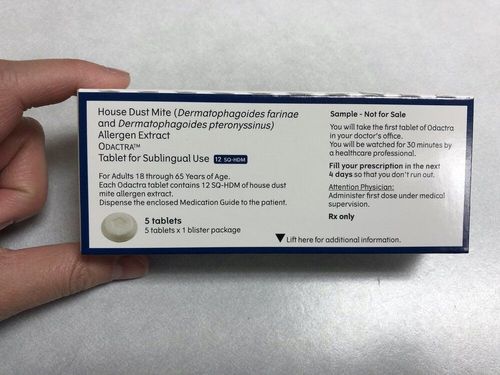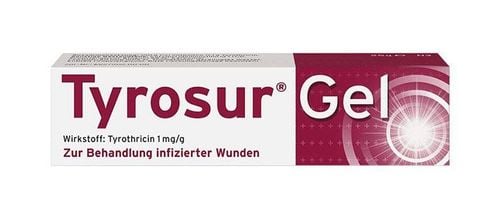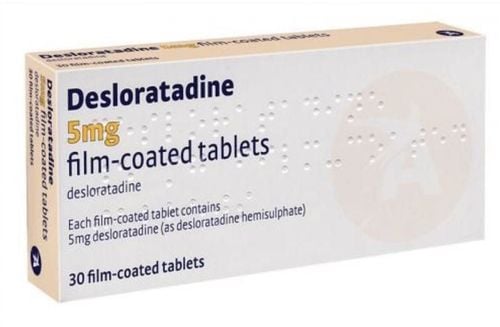This is an automatically translated article.
Clarinex is a drug belonging to the group of antihistamines - a natural chemical produced by the body encountered in allergic reactions, Clarinex can be indicated for conditions such as seasonal allergic rhinitis, allergic rhinitis. long-term response,...1. Uses of Clarinex
Before coming to the use of Clarinex, let's find out what Clarinex is?
Clarinex is an oral antihistamine. This drug is available in two dosage forms on the market as follows: Clarinex tablets containing the active ingredient Desloratadine and Clarinex Oral Solution clear orange liquid containing 0.5mg/1 ml of Desloratadine.
This medicine can relieve allergy symptoms such as watery eyes, runny nose, itchy eyes, itchy nose, sneezing, hives and itching by blocking a natural substance (histamine) that the body has produced in an allergic reaction.
In addition, Clarinex is also used to treat hives and itchy skin in people with chronic skin reactions.
2. How to use Clarinex?
2.1. Objects to note when using Clarinex
Do not use this medicine for people who are allergic to Desloratadine or to Loratadine.
Before taking Clarinex, tell your doctor if you:
Liver disease Kidney disease Are pregnant Are breast-feeding This medicine may contain Phenylalanin. Tell your doctor if you have PKU - phenylketonuria.
2.2. Dosage and Administration of Clarinex
Take this medication by mouth with or without food as directed by your doctor, usually once daily.
When giving medicine to children, carefully follow the instructions from the doctor. Clarinex should not be given to children younger than 6 months of age.
With liquid medicine measure the medicine carefully with a graduated dosimeter.
If you are using a quick release tablet, place the tablet on your tongue and let it dissolve without chewing, swallowing several times as it dissolves. Do not remove the tablet from the blister until just before use.
Dosage depends on your age, medical condition and response to therapy. Do not use more or more often than directed.
For adults and adolescents 12 years of age and older, the recommended dose is one 5mg tablet once daily or 2 teaspoons of solution (5mg in 10ml) once daily. Children 6 to 11 years of age take the recommended dose of 1 teaspoonful full of solution (2.5mg in 5mL) once daily or one 2.5mg tablet once daily. Children 12 months to 5 years of age take the recommended dose of half a teaspoon of solution (1.25mg in 2.5mL) once daily. Children 6 to 11 months of age receive the recommended dose of 2ml (1mg) solution once daily. Adults with liver and kidney failure: Should start with a dose of 5mg every other day. Dosage recommendations for children with hepatic or renal impairment cannot be made due to lack of data.
If your condition does not improve or becomes worse, let your doctor know.
If you miss a dose of Clarinex take it as soon as possible, but skip the missed dose if it is almost time for your next dose. Do not arbitrarily double the dose to make up for it.
Symptoms of overdose may include: Drowsiness, worsening difficulty breathing, fainting, call 911 if the patient's condition is dangerous.
Do not take medicine containing Loratadine while taking Desloratadine because Desloratadine is very similar to Loratadine
Tell your doctor about all other medicines you are taking, especially:
Cold or allergy medicine; Cimetidine ; Fluoxetine; Ketoconazole ; Antibiotics - Azithromycin or Erythromycin.
3. Clarinex side effects
During the use of this medicine may experience side effects such as:
Sore throat Nausea Fatigue Stomach pain Muscle pain Fever Loss of appetite Diarrhea Difficulty sleeping If any side effects persist or become worse, tell your doctor or pharmacist right away.
A very serious allergic reaction to Clarinex is very rare. However, get medical help right away if you notice any symptoms of a serious allergic reaction including: rash, itching, swelling of the face, throat, tongue, severe dizziness or trouble breathing.
Clarinex can be sold in many different forms and strengths, read the instructions on the drug leaflet carefully or follow the instructions from your doctor or pharmacist for your medical condition.













